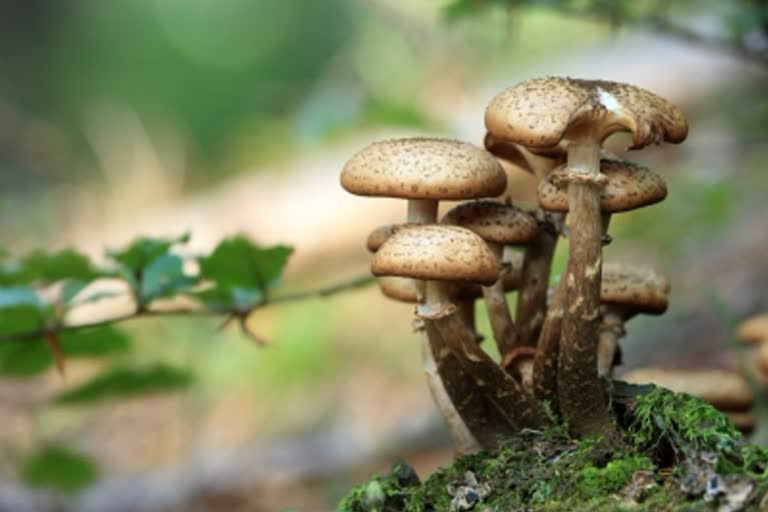Dehradun: In a significant development that can help reduce pollution, scientists have discovered a mushroom from the forests of Uttarakhand which eliminates carbon pollution. Principal Scientist Dr Sunil Kumar, who is doing research in Biotechnology Conversion Area at CSIR's Central Institute IIP Dehradun, and his team have discovered the mushroom 'Trematis Maxima' in the forests of the state.
The research team said that this mushroom eliminates the polycyclic aromatic hydrocarbons present in the water and soil, constituting carbon pollution around it, which is considered very fatal for humans. The team of scientists is currently exploring other options to grow the mushroom in the lab and test its carbon trapping capability there.
Although every kind of pollution containing carbon is very dangerous for human life, polycyclic aromatic hydrocarbons in particular are considered to be extremely dangerous for human cells. According to researchers, if any molecule of such a carbon-rich substance comes in contact with humans or comes from somewhere in our food chain, it can prove to be very fatal.
Also read: New bicolour crab species 'Ghatiana Dvivarna' found in Karnataka
Significantly, the American Environmental Protection Agency (EPNA) has placed such collections of polyaromatic hydrocarbons in the carcinogenic category as the hydrocarbons are believed to cause mutations in human genes. Most of the carbon-rich pollution comes from petroleum products from the smoke coming out of vehicles, which reaches our environment.
During the rainy season, it percolates into the ground with water and comes into the human food chain. Dr Sunil Kumar, Principal Scientist at CSIR's Central Institute of Petroleum said that there are many types of fungus on earth with each having its own distinct property and quality. He explained that the fungus is a parasite and depends on others for its food.
The parasite swallows its food and converts it into small fragments using certain enzymes. The fungus which has been discovered by the researchers of IIP Dehradun is named 'Trematis Maxima'. It releases a special type of enzyme, which breaks down molecules of polyaromatic hydrocarbons, the researchers said. This way, the fungus frees the soil or water around it from pollution containing poly-hydrocarbons. Dr Sunil and his team are currently working on the feasibility to bring the fungus to open market which can be a game changer in tackling carbon pollution.



